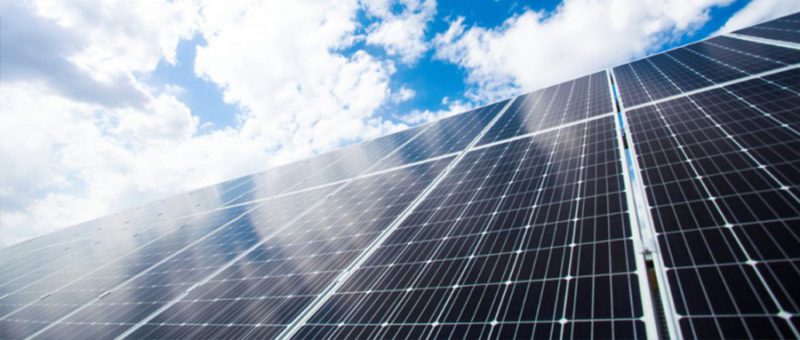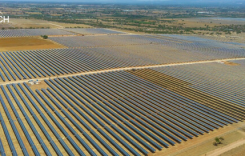PVTIME – The energy market analysis firm Wood Mackenzie has stated that achieving global net-zero emissions by 2050 is now impossible, as global temperatures are set to rise by 2.6°C. The firm’s analysis reveals that none of the G7 nations will meet their 2030 emissions reduction targets. This shortfall has dashed hopes of achieving the 2050 net-zero goal, making it almost impossible to fulfil the Paris Agreement’s aim of limiting global warming to 2°C.

In order to cap temperature rises at 2°C, the firm’s report states that the world must invest 4.3 trillion US dollars each year between 2025 and 2060. Additionally, over the next decade, the energy sector’s share of global GDP must increase from 2.5% to 3.25%. Even with these measures in place, achieving global net-zero emissions would still only be possible by 2060, which is ten years later than scientists say is necessary to mitigate the worst impacts of climate change.
Although renewable energy has grown faster than any other energy source, rising from 5% to 20% of the global power supply in a decade, the report notes that the sector is facing headwinds. Prakash Sharma, Wood Mackenzie’s vice president for scenario planning and technology, points out that the energy system is becoming increasingly complex, interconnected and volatile. As technologies such as artificial intelligence and electrification expand and drive a surge in power demand, the once aspirational decarbonisation transition now faces tough trade-offs around scale, system integration, capital allocation and geopolitics.
The report adds that the United States, China and Europe will be the decisive forces shaping future energy and climate trajectories. Sharma explains that the US reversed course on climate action during the Trump administration, including withdrawing from the Paris Agreement, supporting expanded fossil fuel extraction, and rolling back clean technology incentives. In contrast, China is spearheading the development of low-carbon technologies thanks to its dominance in electric vehicles and solar energy, as well as its aggressive deployment of renewable energy, although it remains a major emitter of fossil fuels.
Sharma also notes that Europe is the most ambitious region when it comes to net-zero emissions, viewing clean technology as essential for achieving economic and energy security. However, earlier this year, economists warned that the continent’s commitment to increased military spending could divert funds from climate initiatives. In October 2024, the global consultancy firm DNV also cautioned that global conflicts and macroeconomic challenges pose risks to the energy transition by diverting attention and resources away from climate action.
Wood Mackenzie’s ‘base case’ forecast projects that, by 2050, variable renewable energy, led by solar and wind, will account for 60% of global electricity generation. Solar PV capacity alone is expected to double by 2030, surpassing natural gas in 2033 and coal in 2034.
According to the base case, achieving net-zero emissions would require significant investment hikes: the US would need to increase its annual spending from 388 billion US dollars to 682 billion US dollars (a 76% rise); Europe, from 455 billion US dollars to 619 billion US dollars (36%); and China, from 913 billion US dollars to 1.177 trillion US dollars (29%). Many other countries and regions would need to more than double their transition spending to reach net zero.
Sharma emphasises that, while accelerating the transition may seem more costly in the short term due to compressed investment timelines, delaying action risks substantially higher long-term climate adaptation costs. The next decade is a critical climate checkpoint that will determine whether meaningful decarbonisation remains feasible with significantly increased investment.
The report identifies the ongoing influence of new geopolitical dependencies on rare earth mineral supplies on energy geopolitics. China dominates the supply of lithium, which is vital for most battery storage systems and the refining of other rare earth minerals. Demand for nickel, cobalt and copper will also continue to rise due to their use in solar energy, storage and electric vehicles. Sharma notes that this concentration of resources grants new influence to nations that hold them, while importers compete to secure supply agreements, diversify sources and build stockpiles. The availability and affordability of critical minerals have become a new battleground, impacting not only technology costs, but also shaping the balance of power in the new energy landscape.
The report also highlights that surging power demand from AI data centres is exacerbating global decarbonisation challenges. Wood Mackenzie states that this spike could trigger power crises and higher electricity prices while hindering the achievement of clean power commitments by 2030. Data centres are projected to consume 700 TWh of electricity by 2025, surpassing electric vehicles, and this figure could double by 2030. Nevertheless, integrating AI into energy systems could optimise operations and reduce emissions in the long term.

Scan the QR code to follow PVTIME official account on Wechat for latest news on PV+ES











